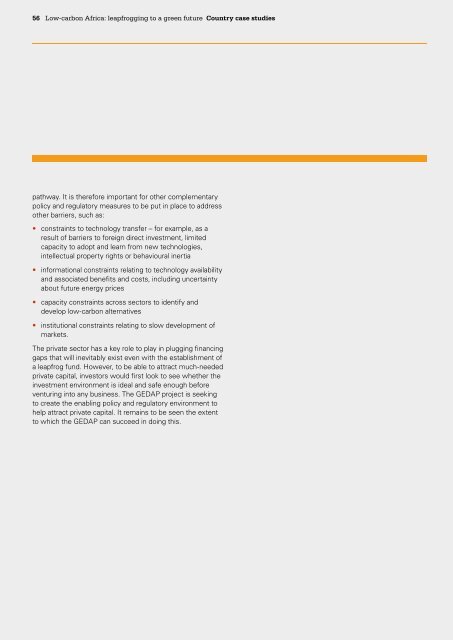Ju8uG
Ju8uG
Ju8uG
Create successful ePaper yourself
Turn your PDF publications into a flip-book with our unique Google optimized e-Paper software.
56 Low-carbon Africa: leapfrogging to a green future Country case studies<br />
pathway. It is therefore important for other complementary<br />
policy and regulatory measures to be put in place to address<br />
other barriers, such as:<br />
• constraints to technology transfer – for example, as a<br />
result of barriers to foreign direct investment, limited<br />
capacity to adopt and learn from new technologies,<br />
intellectual property rights or behavioural inertia<br />
• informational constraints relating to technology availability<br />
and associated benefits and costs, including uncertainty<br />
about future energy prices<br />
• capacity constraints across sectors to identify and<br />
develop low-carbon alternatives<br />
• institutional constraints relating to slow development of<br />
markets.<br />
The private sector has a key role to play in plugging financing<br />
gaps that will inevitably exist even with the establishment of<br />
a leapfrog fund. However, to be able to attract much-needed<br />
private capital, investors would first look to see whether the<br />
investment environment is ideal and safe enough before<br />
venturing into any business. The GEDAP project is seeking<br />
to create the enabling policy and regulatory environment to<br />
help attract private capital. It remains to be seen the extent<br />
to which the GEDAP can succeed in doing this.


